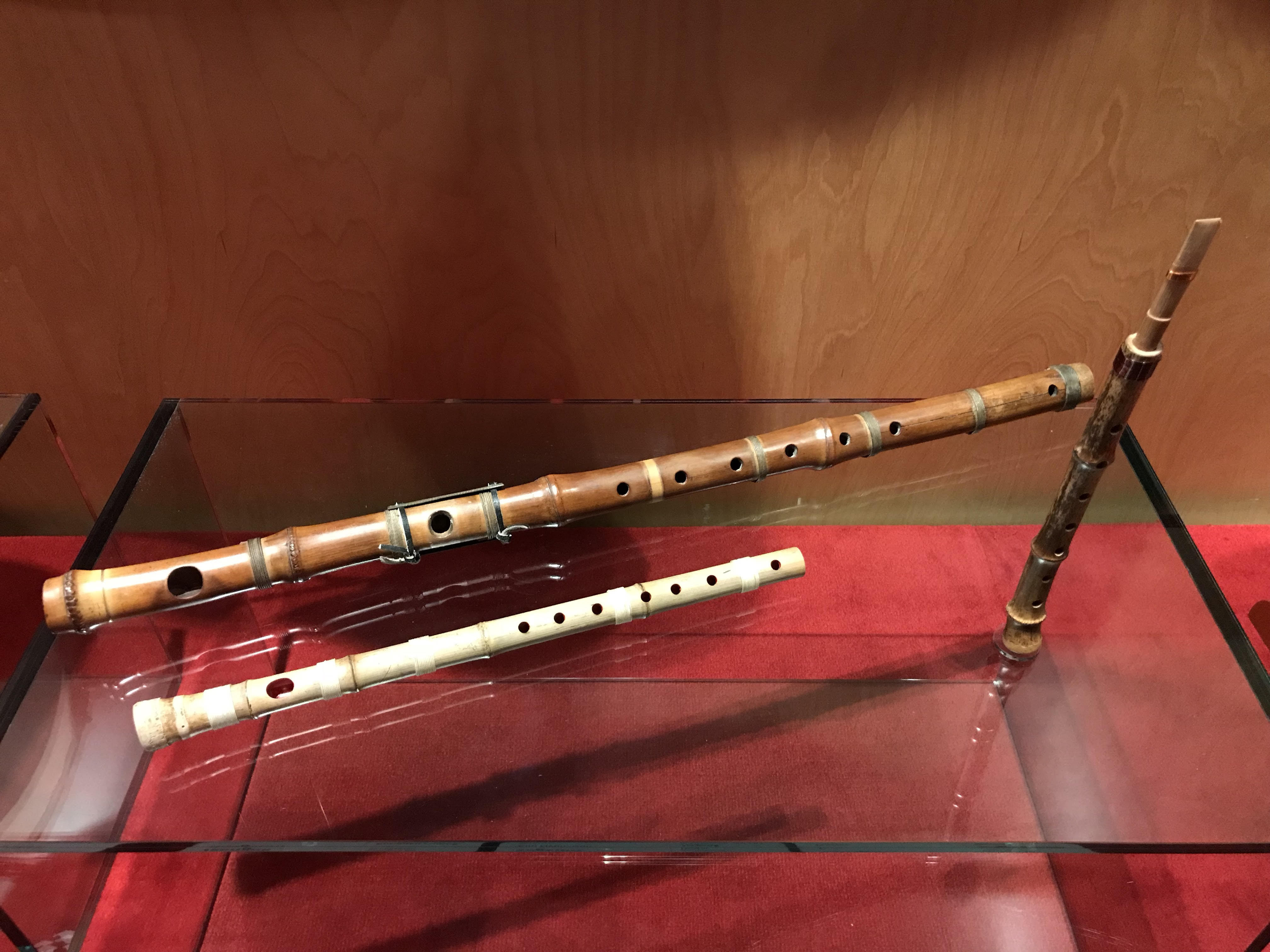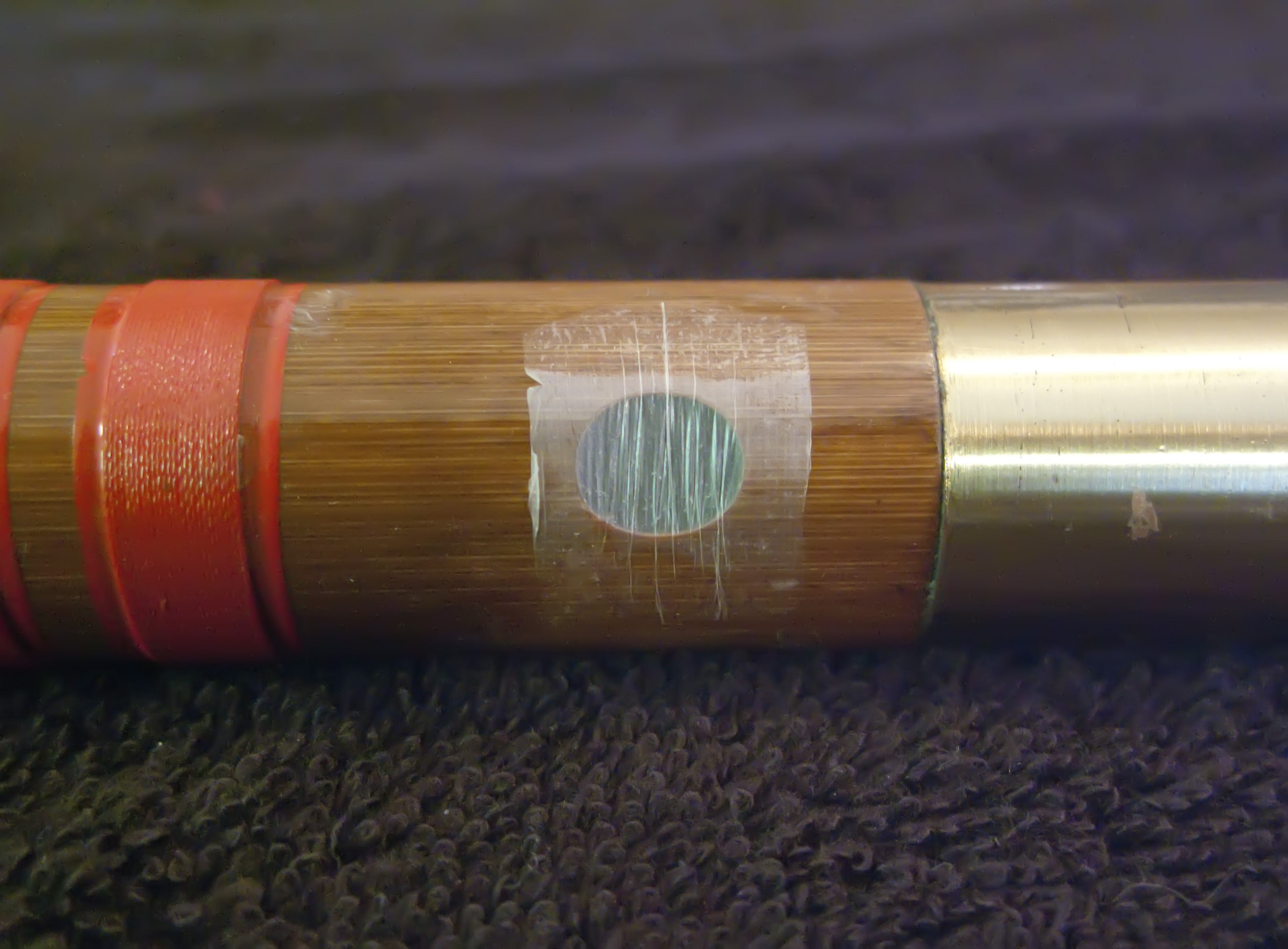|
Daegeum
The ''daegeum'' (also spelled ''taegum'', ''daegum'' or ''taegŭm'') is a large bamboo flute, a transverse flute used in traditional Korean music. It has a buzzing membrane that gives it a special timbre. It is used in court, aristocratic, and folk music, as well as in contemporary classical music, popular music, and film scores. And ''daegeum'' has a wide range and has a fixed pitch, so other instruments tune in to the ''daegeum'' when playing together. It is critical to understand that there are two types of daegeum: Jeongak and Sanjo. Jeongak Daegeum is a bit longer than Sanjo Daegeum and is the formal daegeum used historically at court. Sanjo Daegum is a bit shorter and historically more associated with the commoners. They both have the unique and aforementioned buzzing membrane. Smaller flutes in the same family include the ''junggeum'' () and ''sogeum'' (), neither of which today have a buzzing membrane. The three together are known as ''samjuk'' (; literally "three bamboo" ... [...More Info...] [...Related Items...] OR: [Wikipedia] [Google] [Baidu] |
Junggeum
The ''junggeum'' (), also ''chunggum'' or ''chunggŭm'', is a medium-sized transverse bamboo flute formerly used in traditional Korean music. Unlike the larger '' daegeum'', it does not have a buzzing membrane (although it did have one in ancient times). It was used in court, aristocratic, and folk music in premodern times, but is rarely used today. Other flutes in the same family include the '' daegeum'' and ''sogeum''; the three together are known as ''samjuk'' (hangul: 삼죽; hanja: 三 竹; literally "three bamboo"), as the three primary flutes of the Silla period. Both of these are still used in traditional music, as well as in contemporary classical music, popular music, and film scores. The ''junggeum'' currently used in the National Gugak Center is about 65 cm long and 1.7 cm in diameter. See also * Bamboo musical instruments * Daegeum * Dizi * Traditional music of Korea *Sogeum The ''sogeum'' (; also spelled ''sogum'' or ''sogŭm'') is a small bamboo ... [...More Info...] [...Related Items...] OR: [Wikipedia] [Google] [Baidu] |
Sogeum
The ''sogeum'' (; also spelled ''sogum'' or ''sogŭm'') is a small bamboo transverse flute used in traditional Korean music. Unlike the larger '' daegeum'', it does not have a buzzing membrane (although it did have one in ancient times). It is used in court, aristocratic, and folk music, as well as in contemporary classical music, popular music, and film scores. The overall length and thickness are not constant because ''sogeum'' is made of natural bamboo, but it is 40 cm long and 2.2 cm thick. Other larger flutes in the same family include the medium-sized '' junggeum'' and the large ''daegeum''; the three together are known as ''samjuk'' (hangul: 삼죽; hanja: 三 竹; literally "three bamboo"), as the three primary flutes of the Silla period. The ''sogeum'' has the highest and clearest tone among wind instruments, and is often composed of singular numbers in ensemble, where other wind instruments are composed of multiple instruments. Playing method Sogeum is ... [...More Info...] [...Related Items...] OR: [Wikipedia] [Google] [Baidu] |
Sanjo (music)
''Sanjo'' (), literally meaning 'scattered melodies', is a style of traditional Korean music, involving an instrumental solo accompanied by drumming on the ''janggu'', an hourglass-shaped drum. The art of ''sanjo'' is a real crystallization of traditional Korean melody and rhythm which may have been handed down by rote generation after generation. The drummer who beats the ''janggu'' also makes '' chuimsae'' (exclamations) in order to please the audience. The audience can also express their excited feeling with ''chuimsae'' while listening to ''sanjo''. A big ''chuimsae'' indicates a good performance, so the musician can make a better performance. Like '' pansori'', ''chuimsae'' plays an important role in ''sanjo''. Without ''chuimsae'', the music is meaningless. ''Chuimsae'' connects musician and audience during a ''sanjo'' performance. Almost every Korean traditional musical instrument is used in ''sanjo'': gayageum, geomungo, daegeum, haegeum, piri, taepyeongso, ajaeng, da ... [...More Info...] [...Related Items...] OR: [Wikipedia] [Google] [Baidu] |
Bamboo Flute
The bamboo flute, especially the bone flute, is one of the oldest musical instruments known. Examples of Paleolithic flutes, Paleolithic bone flutes have survived for more than 40,000 years, to be discovered by archaeologists. While the oldest flutes currently known were found in Europe, Asia too has a long history with the instrument that has continued into the present day. In China, a playable bone flute was discovered, about 9000 years old. Historians have found the bamboo flute has a long history as well, especially China and India. Flutes made history in records and artworks starting in the Zhou dynasty. The oldest written sources reveal the Chinese were using the Guan (instrument), kuan (a reed instrument) and Xiao (flute), hsio (or xiao, an end-blown flute, often of bamboo) in the 12th-11th centuries b.c., followed by the chi (or ch'ih) in the 9th century b.c. and the yüeh in the 8th century b.c. Of these, the chi is the oldest documented cross flute or transverse flute, ... [...More Info...] [...Related Items...] OR: [Wikipedia] [Google] [Baidu] |
Dizi (instrument)
The ''dizi'' (, pronounced ), is a Chinese transverse flute. It is also sometimes known as the ''di'' () or ''héngdi'' (), and has varieties including Qudi (), Bangdi (), and Xindi (). It is a major Chinese musical instrument that is widely used in many genres of Chinese folk music, Chinese opera, as well as the modern Chinese orchestra. The ''dizi'' is also a popular instrument among the Chinese people as it is simple to make and easy to carry. Most ''dizi'' are made of bamboo, which explains why ''dizi'' are sometimes known by simple names such as Chinese bamboo flute. However, "bamboo" is perhaps more of a Chinese instrument classification like "woodwind" in the West. Northern Chinese ''dizi'' are made from purple or violet bamboo, while ''dizi'' made in Suzhou and Hangzhou are made from white bamboo. ''Dizi'' produced in southern Chinese regions such as Chaozhou are often made of very slender, lightweight, light-colored bamboo and are much quieter in tone. Although b ... [...More Info...] [...Related Items...] OR: [Wikipedia] [Google] [Baidu] |
Transverse Flute
A transverse flute or side-blown flute is a flute which is held horizontally when played.Powell, A. (2001). Transverse flute. Grove Music Online. Retrieved 6 Feb. 2024 The player blows across the embouchure hole, in a direction perpendicular to the flute's body length. Transverse flutes include the Western concert flute, the Irish flute, the Indian classical flutes (the bansuri and the venu), the Chinese dizi, the Western fife, a number of Japanese fue, and Korean flutes such as daegeum, junggeum and sogeum. See also *End-blown flute thumb , Notched flute, showing U-shaped notch in the instrument’s rim. The end-blown flute (also called an edge-blown flute or rim-blown flute) is a woodwind instrument played by directing an airstream against the sharp edge of the upper en ... References {{Flute-stub ... [...More Info...] [...Related Items...] OR: [Wikipedia] [Google] [Baidu] |
Di Mo
The ''dimo'' () is a special membrane applied to the transverse Chinese flute called '' dizi'' (or ''di''), giving the instrument its characteristic buzzing timbre. ''Dimo'', made from the tissue-thin membrane from the interior of a specific variety of bamboo, are supplied as tubular sleeves. Only a small rectangle is needed at a time, so for application, a small section is cut off the end of the ''di mo'' sleeve, and that small tube is cut open to make a rough rectangle of flat membrane. The Korean transverse bamboo flute called ''daegeum'' has a similar buzzing membrane. The Korean ''sogeum'' and ''junggeum'', Vietnamese ''sáo'', and the Thai '' khlui'' also once had membranes, but these are not used today. Application The ''di mo'' is applied to the membrane hole (or Mo kong) of the dizi using a special, traditional glue called '' Ejiao''. One of the advantages of ''ejiao'' is that the glue is water-soluble, so that it can be wetted again to re-adjust the ''di mo''. A ... [...More Info...] [...Related Items...] OR: [Wikipedia] [Google] [Baidu] |
Bamboo Musical Instruments
Bamboos natural hollow form makes it an obvious choice for many musical instruments. In South and South East Asia, traditional uses of bamboo the instrument include various types of woodwind instruments, such as flutes, and devices like xylophones and organs, which require resonating sections. In some traditional instruments bamboo is the primary material, while others combine bamboo with other materials such as wood and leather. Overview Bamboo has been used to create a variety of instruments including flutes, mouth organs, saxophones, trumpets, drums and xylophones. Flutes :''See Bamboo flutes'' There are numerous types of bamboo flutes made all over the world, such as the ''dizi'', ''xiao'', ''shakuhachi'', '' palendag'' and '' jinghu''. In the Indian subcontinent, it is a very popular and highly respected musical instrument, available even to the poorest and the choice of many highly venerated maestros of classical music. It is known and revered above all as the divine f ... [...More Info...] [...Related Items...] OR: [Wikipedia] [Google] [Baidu] |
Korean Musical Instruments
Traditional Korean musical instruments comprise a wide range of string, wind, and percussion instruments. String Korean string instruments include those that are plucked, bowed, and struck. Most Korean string instruments use silk strings, except as noted. Plucked Zithers * Gayageum () – A long zither with 12 strings; modern versions may have 13, 15, 17, 18, 21, 22, or 25 strings * Geomungo () – A fretted bass zither with six to eleven silk strings that is plucked with a bamboo stick and played with a weight made out of cloth ** Cheolhyeongeum () – A geomungo with 8 steel strings plucked with a bamboo stick and played with a slide made out of either glass or metal in the manner of a slide guitar, developed in the 20th century http://www.music-plaza.com/Product_Images/large/CNLR05062.jpg photo 2] * [...More Info...] [...Related Items...] OR: [Wikipedia] [Google] [Baidu] |




